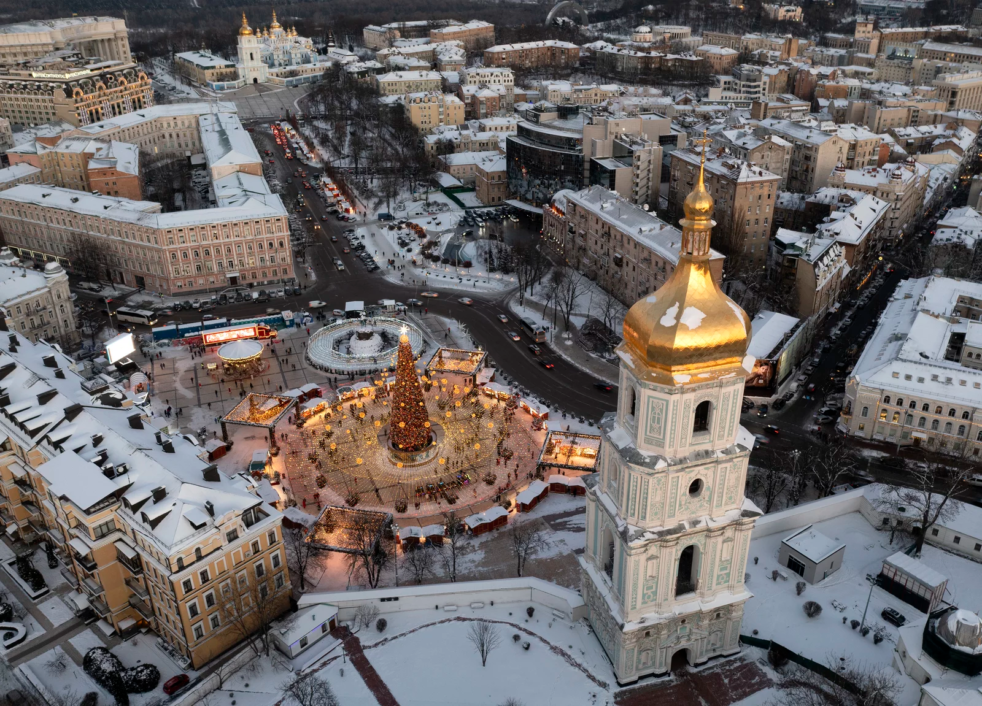Missiles struck both East and West Ukraine. Russian President Vladimir Putin announced a “special military operation” that morning, and Russian troops began invading the Ukrainian capital, Kyiv. However, Ukrainian President Volodymyr Zelensky stood his ground, and Kyiv remained under Ukrainian control.
Initially, the international community predicted that Russia would take over Ukraine in a 72-hour operation, but the military intervention lasted for months. In Sept. 2022, much of the Kharkiv region was reclaimed, and in Nov. 2022, Russian forces withdrew from Kherson.
Recently in March 2023, after many victories and an alarming death toll of over 30,000 civilians, the Ukraine government is hoping for a final victory over Russia.
Russia has been at odds with Ukraine for many years. Since 2014, after the annexation of Crimea, both Ukraine and Crimea have maintained a tense relationship, with Russia fighting against Ukraine joining NATO. Although the conflict has been reported on repeatedly by global and local news stations, it is essential to understand the perspective of Ukrainian citizens — what it was like to hear about the war, to live through the beginning of the conflict, and to have loved ones who face constant danger.
The Technique had the opportunity to interview Oleksandr Horielko, first-year CS, who is originally from Dnipro, Ukraine. He recounted his experiences from before the war started, during the beginning stages, and what the state of the country looks like now, a year later.
Horielko recounted that before Feb. 24, 2022, the idea of war was a very distant thought that many people brushed aside as something that was too bizarre to happen to everyday citizens. Though there had been reports about the war as early as October and November, it was not until pictures of Russian troops surrounding Ukraine were released that panic began to spread.
The morning of the war, the citizens of Ukraine woke up at 6 a.m. to the sounds of bombing and dozens of notifications from friends and family to check in on the safety of their loved ones. Horielko even mentioned that the headmaster of his school encouraged distance learning that day.
“It impressed me that even though the war was going on, people still carried on. This unitedness, and positivity is one of the many reasons Ukraine still stands,” he said.
Many citizens fled Ukraine at the beginning of the war, migrating to Poland, Germany, Canada and other countries open to taking refugees. The United States also has a program titled Uniting for Ukraine (U for U), in order to initiate a smooth process for displaced Ukranians. A lot of citizens also remained behind. Horielko’s grandparents and friends still live in Ukraine.
Horielko mentioned that citizens there are extremely worried about the daily bombings. This past winter, Russian forces targeted several power plants and many citizens lost access to water, heat, gas and lighting, making it difficult to exist in the harsh winter climate.
When asked about what his friends and family back in Ukraine are worried about the most, Horielko said “they go to sleep everyday not knowing if they will wake up. The constant bombings and missile strikes are a great concern for everyone there. Right now, everyone is thinking about victory as soon as possible.”
It has become increasingly essential for civilians facing the brunt of military intervention to stay updated on current events. A Ukrainian politician, Oleksiy Arestovych, goes live on YouTube every day at 10 p.m. and informs citizens about where Russian troops are located and the current negotiations Ukraine has going on with other countries.
Horielko mentioned two resources in particular that he considered very important; Liveuamap is a resource that shows in real-time what missile strikes and bombings are occurring. It is an important resource for Ukranians and is also a good way to add perspective to the severity and danger of the war.
Another resource is called DeepStateMap. It shows the different territories of Ukraine, whether or not they are occupied or liberated currently.
When asked what the future of Ukraine looks like for citizens and the government alike, Horielko said, “I think the situation really changed a lot of things. The war united Ukrainian people a lot. Many people, celebrities and civilians alike have donated an impressive amount of money for weapons. NATO and the EU will change a lot. They already changed. They learned that war can happen at any time. A lot of documents were signed to put an end to any wars, but it still happens. Ukraine is an example. I also think they changed their opinion about the Russian government.”
With ongoing wars around the world and Tech’s large international student population, it is evident that much of the Institute’s student body is impacted by the realities of conflicts in their home countries.
